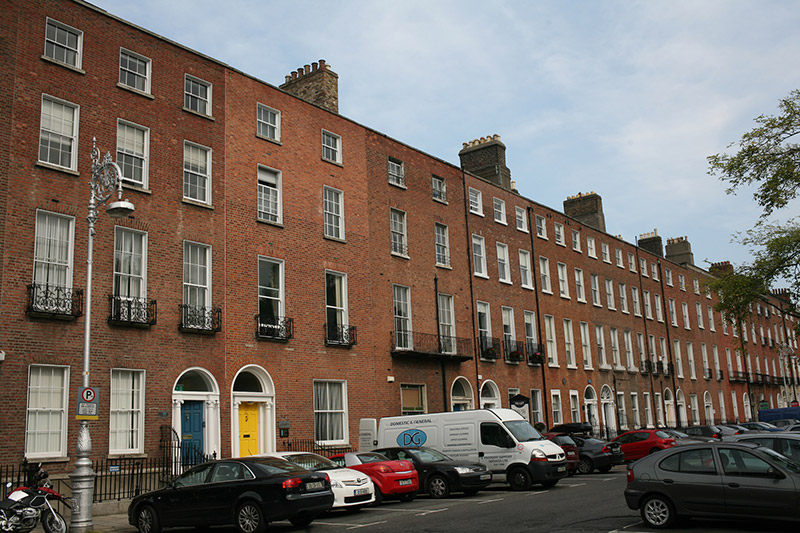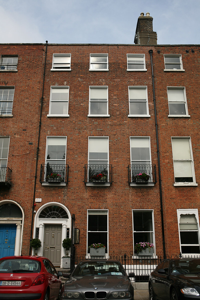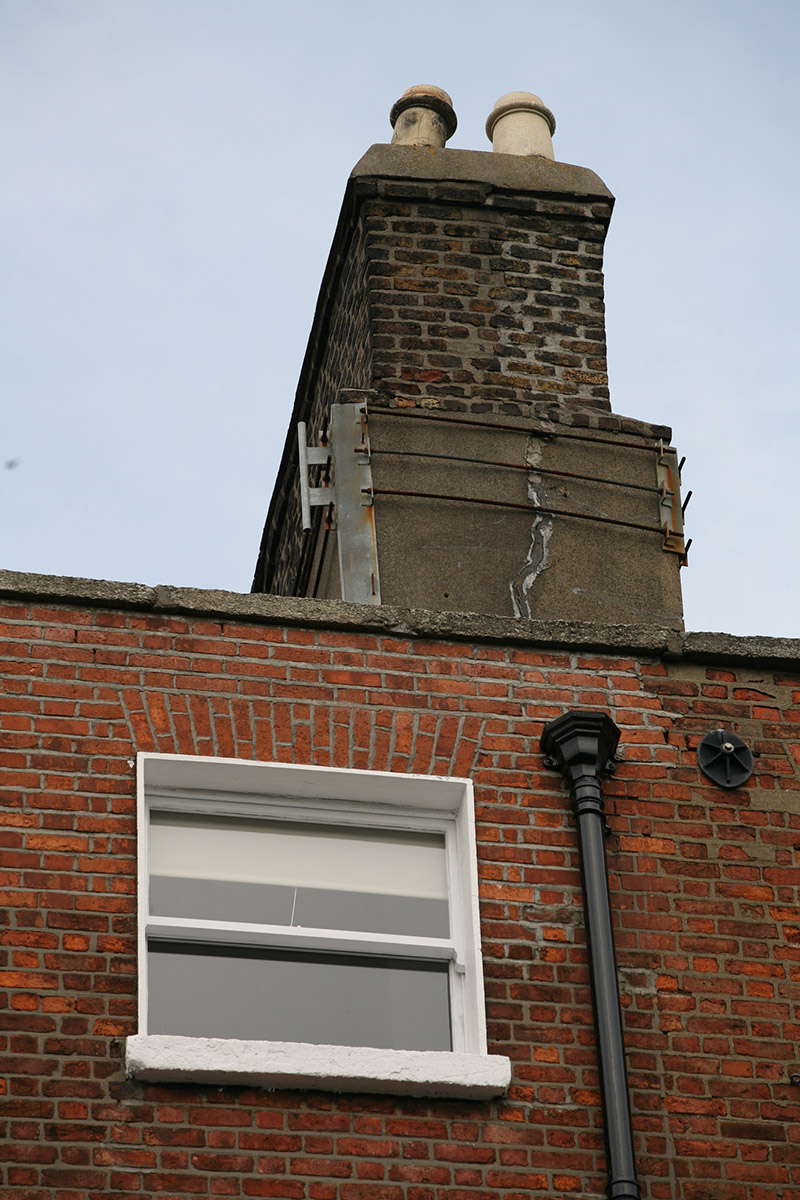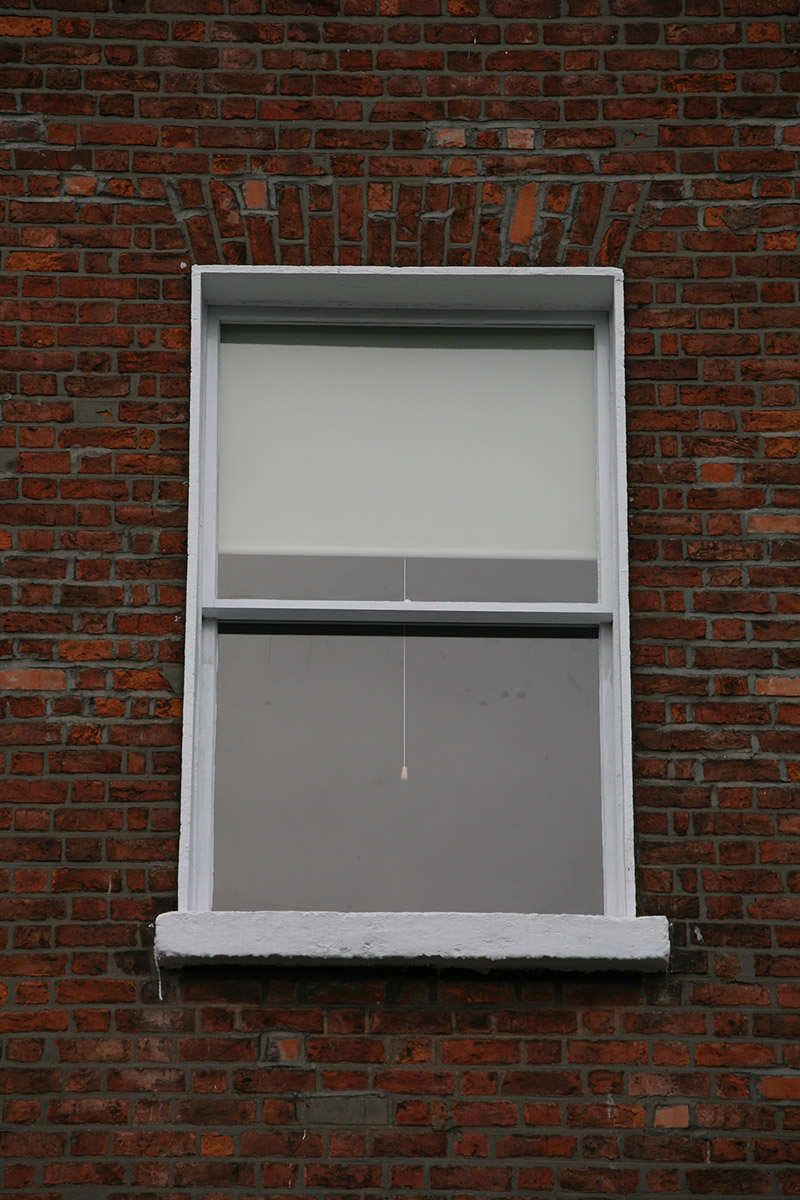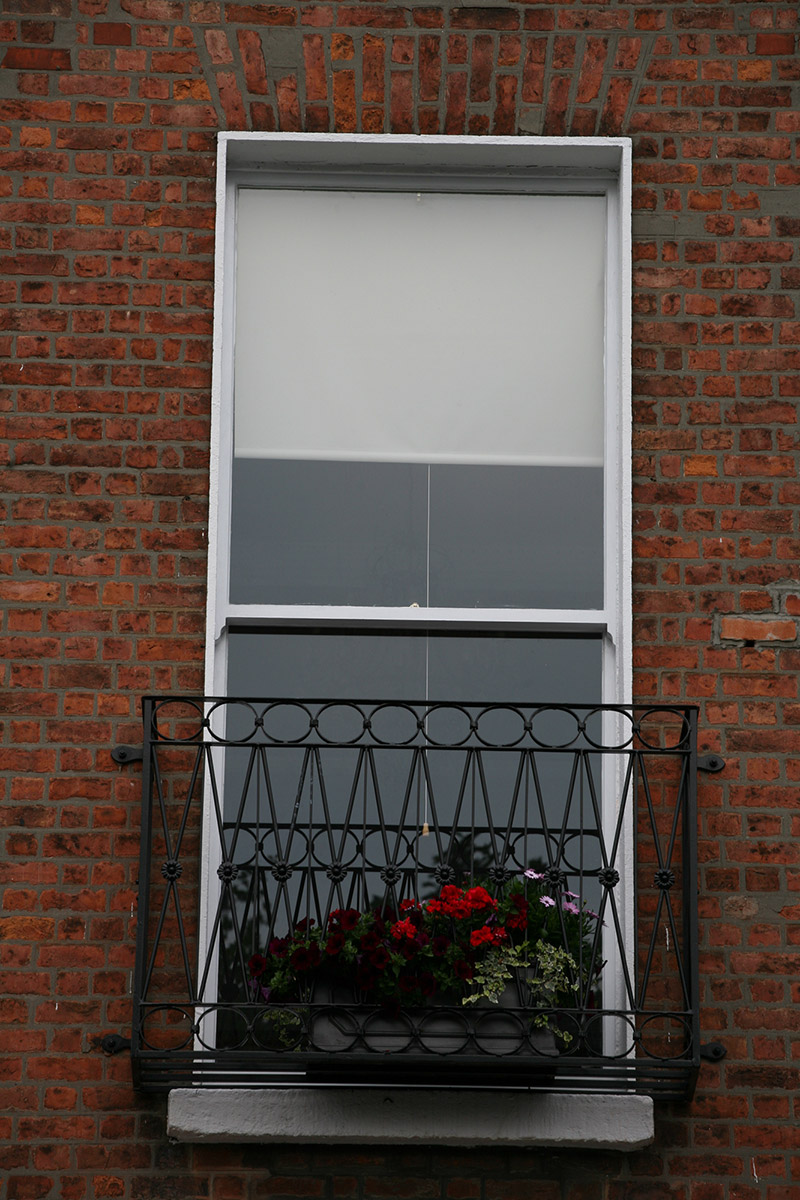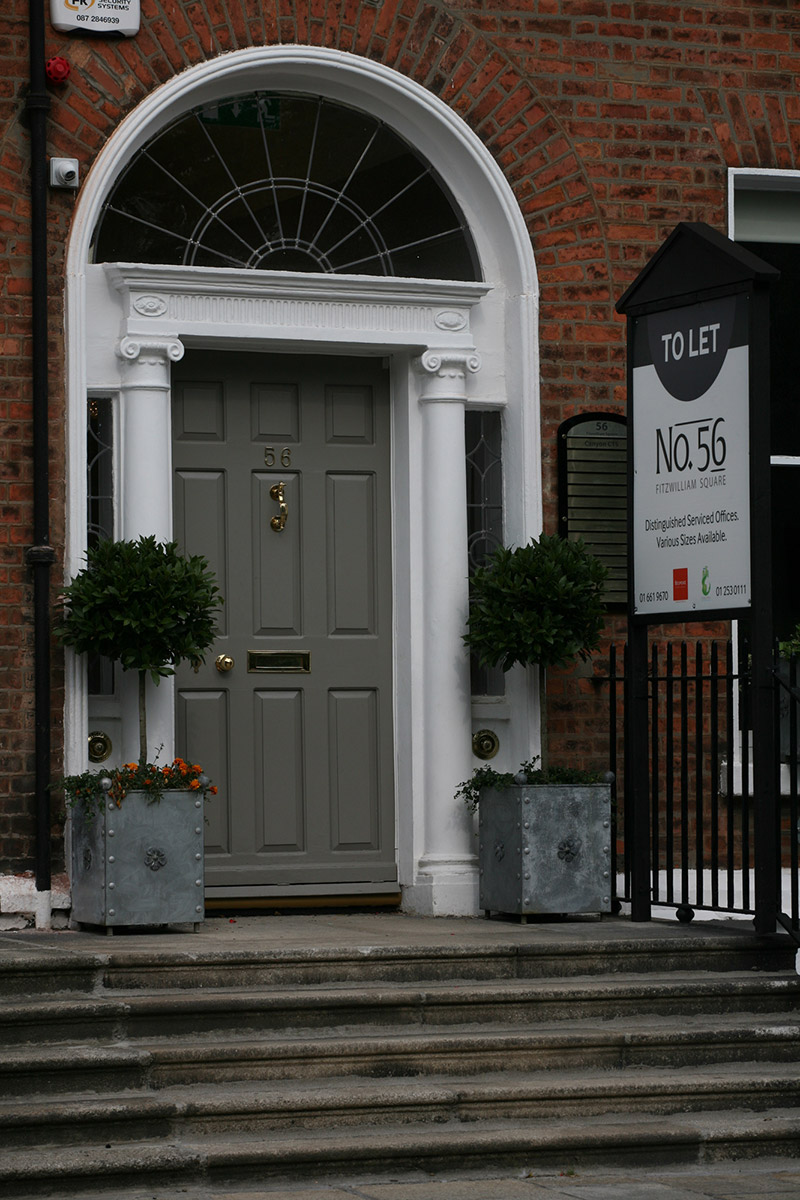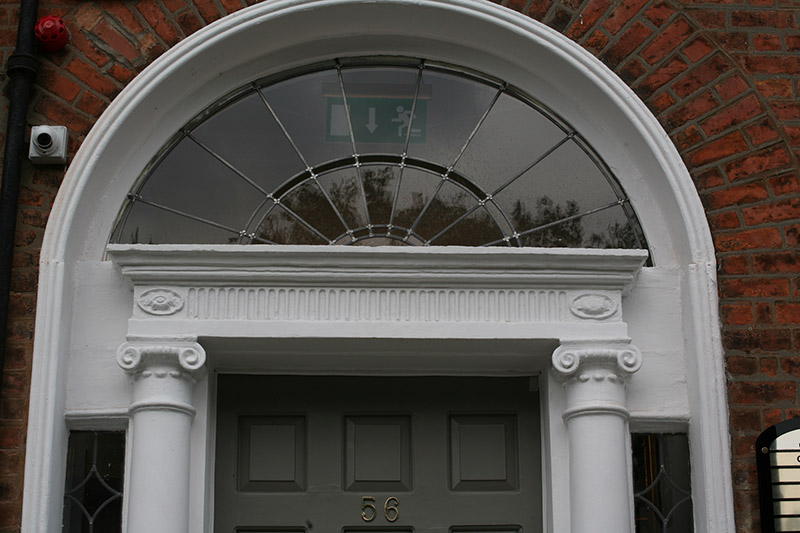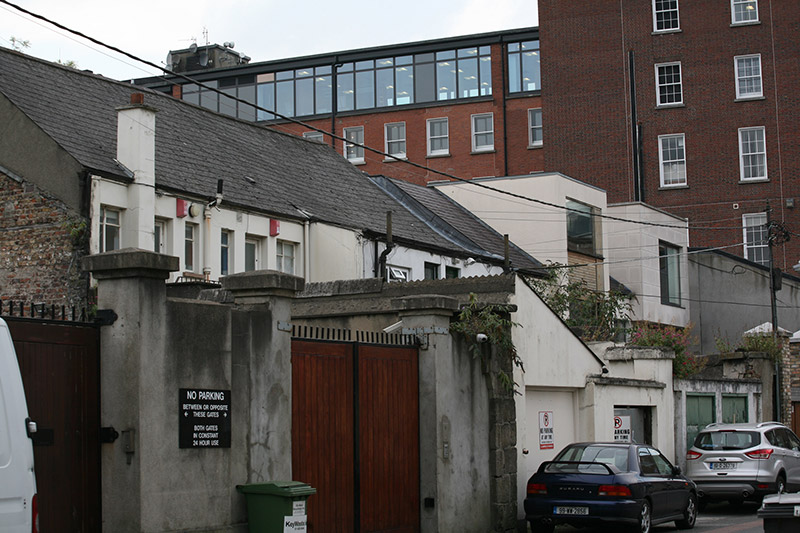Survey Data
Reg No
50930091
Rating
Regional
Categories of Special Interest
Architectural, Artistic
Original Use
House
In Use As
Office
Date
1790 - 1800
Coordinates
316489, 233159
Date Recorded
10/09/2015
Date Updated
--/--/--
Description
Terraced three-bay four-storey over basement former townhouse, built 1797. Multi-storey return abuts to rear (north) elevation. Now in use as offices. M-profile slate roof, hipped to west and set behind parapet wall with granite coping, cast-iron hopper and downpipe breaking through to east and further cast-iron downpipe to west. Part rendered buff brick chimneystacks with lipped clay pots to east party wall. Red brick walls laid in Flemish bond with cement pointing. Masonry plinth course over rendered basement wall. Gauged brick square-headed window openings with granite sills, patent reveals and replacement one-over-one timber sash windows throughout with horns, replacement steel balconettes to first floor. Gauged brick round-headed door opening with masonry Ionic doorcase comprising square-headed door opening flanked by engaged Ionic columns and leaded sidelights supporting fluted lintel entablature with replacement leaded fanlight. Replacement timber panelled door opens onto shared granite platform and nosed granite steps to street. Platform and basement enclosed by original wrought- and cast-iron railings set on granite plinth wall. Concrete steps provide access to basement. Forming part of a continuous terrace of former townhouses lining north side of Fitzwilliam Square. Recent mews building and boundary wall to north along Pembroke Lane.
Appraisal
Forming part of a cohesive terrace comprising Nos. 56-9 (50930091-88), which are characterised by the narrow three-bay frontages, this terrace was the first to be constructed on the square. The building retains its traditional form and proportions, mellow brick which contrasts with the granite dressings, well executed ironwork, and a handsome Ionic doorcase. It contributes to the historic character of the square and the wider south Georgian core. According to Casey (2005), the interior retains joinery and friezes similar to later houses on Merrion Square. Laid out in 1791 by the surveyors J & P Roe, Fitzwilliam Square was the last of the city’s Georgian squares to be completed. Development was staggered and progressed slowly until after the Napoleonic Wars.
